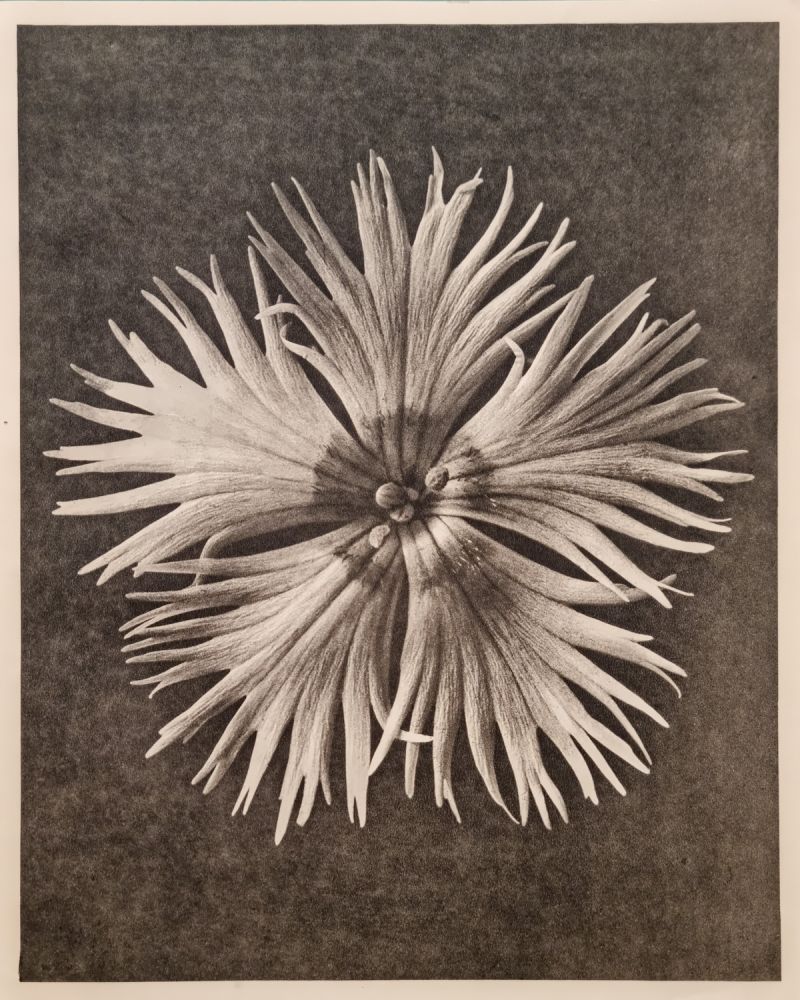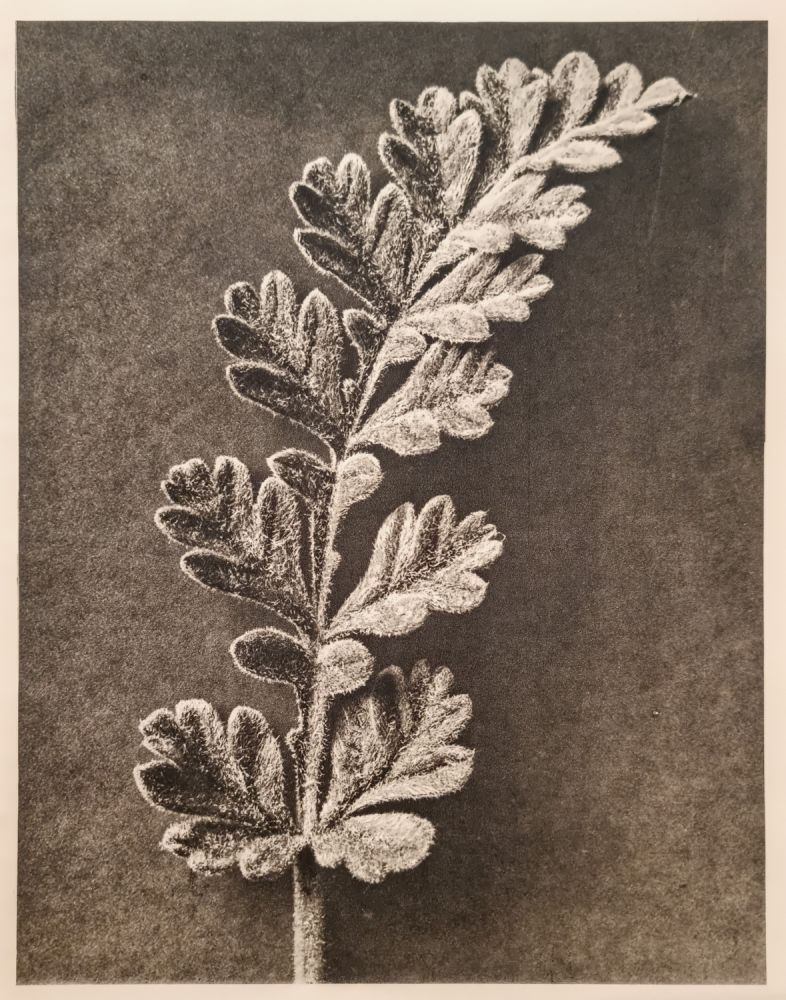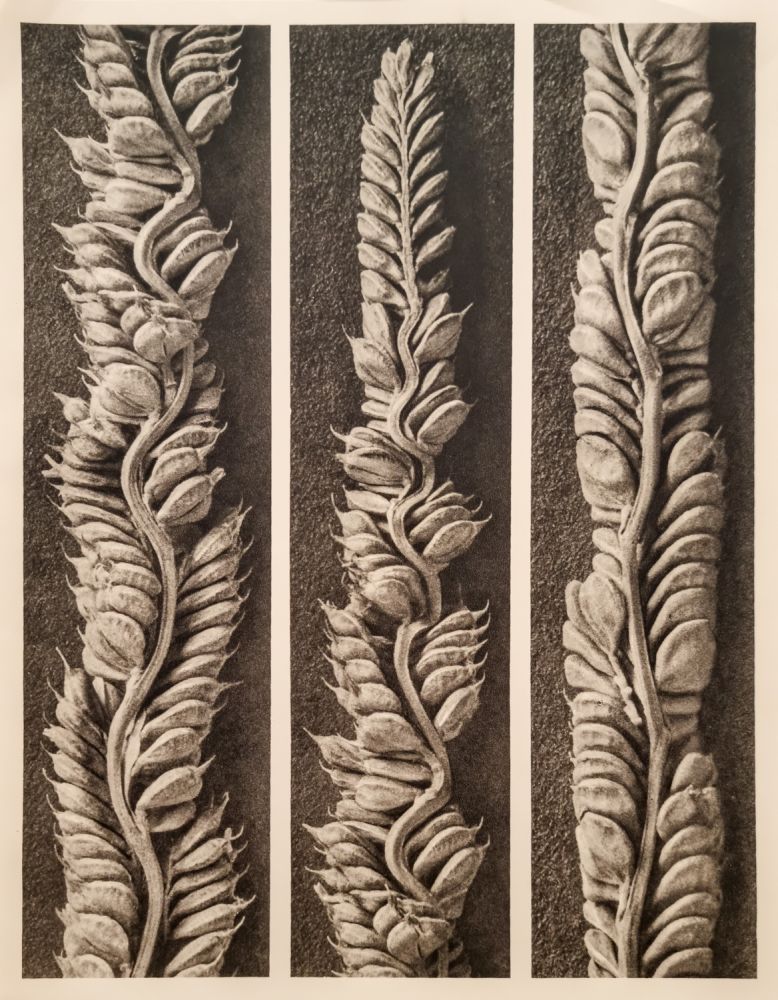"Dianthus plumarius. common pink, in 8x magnification"
plate 2
Photogravure
original sheet from the book, stamp on verso
The heliogravure is an original page from the now legendary book "Urformen der Kunst" by Karl Blossfeldt. The detailed photographs of the plants were used as teaching material for the Unterrichtsanstalt des Kunstgewerbemuseums in Berlin from 1898 onwards. Blossfeldt worked with a homemade plate camera for three negative formats measuring 6x9 cm, 9x12 cm and 13x18 cm. The plant parts, most of which Blossfeldt himself collected, were magnified two to 45 times. A total of around 6,000 photos were taken.
(Source: Karl Blossfeldt Archiv)
The beauty of the umbels
In 1928, Karl Blossfeldt (1865-1932) published the now legendary book of photographs entitled "Urformen der Kunst". It brought together a selection of the pictures of plants that the craftsman had only taken as illustrative material for his students at the Berlin academy. The plants, which were photographed in isolation against a neutral background, their flowers, buds, stems, umbels and seed capsules, often reproduced in high magnification, were intended to serve as a direct model for the decorative art forms of the then already withered Art Nouveau.
But this art educational use of the pictures did not stop there. The Berlin avant-garde gallery owner Karl Nierendorf sensed the cool spirit of New Objectivity in the emotionless and precise pictures and became active accordingly: in 1926 he exhibited the works - together with African sculptures! - In 1926 he exhibited the works - together with African sculptures! - in his gallery, two years later he wrote the introduction to the book publication "Urformen der Kunst", published by Ernst-Wasmuth-Verlag Berlin.
This book of photographs, one of whose first reviewers was Walter Benjamin, not only established the unbroken museum success of Blossfeldt's photographic work to this day - it itself made a steep career as a bestseller. The success was immediate. As early as 1929, a second edition was published in Germany as well as editions in London, New York and Paris. 1935 saw the publication of the "Volksausgabe", which was followed by many others.
In the meantime, Blossfeldt's photographic oeuvre has become one of the incunabula of photographic history, and his estate archives are under special protection as a nationally valuable cultural asset. First editions of the "Urformen" are now traded on the American auction market for several thousand dollars. It is quite obviously the special combination of subject and photographic style that gives the work a classic timelessness and allows it to be "rediscovered" again and again. Thus, the isolating, monumental and formalising approach to nature not only fitted into the concept of New Objectivity, but was subsequently interpreted as an illustration of the relationship between art and nature as well as a precursor of Conceptual Art. But the vegetal motifs are also very popular outside the art context and have become part of the (almost) everyday repertoire of decorative design: they can be found everywhere, even on the covers of American software books.
(Susanne Boecker, Karl Blossfeld Archive)






























